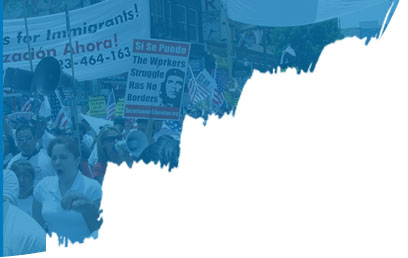
Operation United Front Rescues 47 Victims
On the night of August 26, law enforcement officers arrested one hundred and two human traffickers as part of a multistate sting spearheaded by the Missouri Attorney General’s Office and the Missouri State Highway Patrol. “Operation United Front” also resulted in the rescue of forty-seven victims, forty-one of them requiring medical attention. Two of them were minors.
Operation United Front is being hailed as an unprecedented success in the fight against trafficking, in large part because of the high level of collaboration among law enforcement agencies across several states, as well as the FBI and Homeland Security. As mentioned, Missouri was the center of the operation, not only coordinating it but offering training to officers on the ground.
It also highlights the insidious nature of trafficking, and the fact that we cannot afford to make assumptions about the people and geographical areas involved in it. For example, states along our southern border have long been cited as hotspots for trafficking, and while the statistics bear this out they by no means tell the whole story. First, people who are brought over the border are then transported throughout the country; second, and perhaps more important to note, others are trafficked within their own communities.
Indeed, of the twelve states involved in the sting, just one, Texas, is a border state. Several others were in the Midwest and Great Plans Region – areas many Americans associate with agriculture and national parks. Even more chilling was that one of the arrestees was a St. Louis police officer who also moonlighted at a pediatric hospital. He was caught up in the sting after allegedly attempting to “entice” a fourteen-year-old online; his target was actually an officer from Kentucky.
Trafficking has increased dramatically during the pandemic; this, according to the 2020 Global Report on the Trafficking in Persons released by the United Nations Office on Drugs and Crime. The report, which not only profiles traffickers and victims but analyzes economic and other factors impacting trafficking, cites the global recession caused by COVID-19 as the reason for the uptick. The U.S. State Department’s 2020-2021 Trafficking in Persons report came to the same conclusion, noting both the increased risk to vulnerable populations as well as the strained resources of governments that have been focused on fighting Covid.
In a strong statement made back in July, Secretary of State Antony Blinken called out seventeen countries, including several close allies of the US, for not doing enough to combat trafficking. There is a three-tier system for assessing such efforts, the third tier being the worst offenders and subject to sanctions. Second-tier countries were cited for downgrading charges for offenders, not prosecuting them at all, and/or not enacting sufficient laws to protect victims. Those countries will not be sanctioned, but the hope is that the international attention will put additional pressure on them to pursue traffickers more diligently.
For the rescued victims, Operation United Front marks the opportunity for a new life, assuming they are not trafficked again. For the rest of us, it serves as a reminder that traffickers often blend into society, as well as a call to action to be more aware of what is happening in our own communities. It is ultimately that awareness and connection to others, especially the most vulnerable, that will help bring an end to trafficking.
In our next post, we will discuss the four stages of recovery from trafficking, including how mentorship and education can help survivors heal from trauma and pursue their own dreams.
